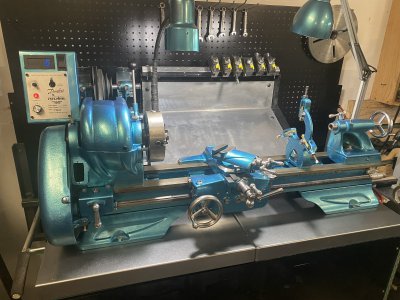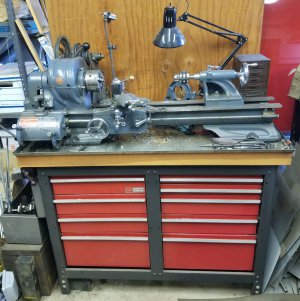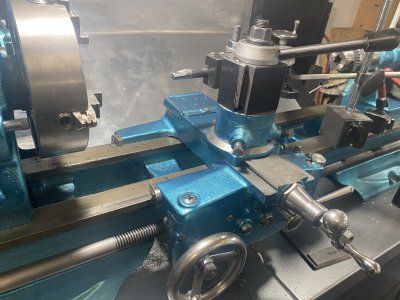I’ve had an Atlas 10” (TH42) for many years now and it does what I need it too. But the key is knowing what you want to build on it and matching the size to that.
Brittle gears? Yeah, ah, nope. Others may differ in that but I have been using with the same “zamak” gears since 1954. well, I haven’t had it since 54, but it has its original gears. No issues when I’m running it whatsoever. I acrually am running some 3d printed gears in it because I wanted to try them. No issues and they actually quite down the “ring” these gear trains usually have.
“Small” is more a reflection of what you want to do with it more than the size of the machine. Are there times when I could use an Atlas 12 or bigger? Sure. But very few times and I’m a regular at the local machine shops so they cut me a good break when I need something cut bigger than my 10” can handle.
You will outgrow it though if you plan to regularly make things bigger than a 10” will handle. Most of my parts are for motorcycles and cars and my 10” is a good size for that.
The real knock against any Atlas 10“ in my mind is its going to be hard to find one that has little to no wear. They’re all in the 30-50+ year old category now, so they’ll all have worn parts somewhere in the machine.
I used mine for years with worn half nuts and other such wear parts. No problem working around the lash and you can still buy parts new from the current brand owners. Thats where several of my parts cane from. Reasonable prices too. Ebay used parts and accessories (ie: taper attachment, milling attachment, etc) are going to cost a pretty penny, but that more of a “collectors” issue than anything else.
Some will say the Atlas isn’t “rigid” enough to do close tolerance work, but mine works fine for me and I can get down in the 2 thou range tolerance when needed. Thats more than accurate enough for what I use it for. I’ve even made and modified engine pistons on it.
Standard upgrades and parts (ie: 4 jaw chuck, motor upgrades, QCTP, etc) all go on it like any other lathe. Some bolt on, some need a little work. Standard type jobs for any lathe.
If you think a 10” will fit your work flow, go for it. If not, save up for something a little bigger.
Heres a quick snap of mine after I finally got to the point where I wanted to tear it down and do a “resto” on it:
View attachment 458955
It has a Baldor DC motor and Danfoss controller running it. it orginally had a 1/4 hp AC motor which was just too wimpy for my use.
Keep in mind anything you find is not going to be in that shape. They will all be old and in various states of mechanical and cosmetic repair.
If you don’t mind a project that you can use while rebuikding, nothing wrong with an Atlas 10”. I enjoyed getting to know how to use mine in a worn state and enjoyed restoring it even more. But I’m funny like that; I like working on machines as much as I enjoy using them. Plus, my lathe is “unique” and has “a bit of me“ in it now.
I do wish I’d waited for a 12” Atlas sometimes, but if I had I’d probably still be wishing I had a lathe with a bigger swing.
I find thats the main problem with lathes: no matter how big you get, you always wish you had a bigger one…you just gotta pick one that covers 75-90% of your needs and farm out whats oversized. If you don’t, you’ll never be happy with what you have.
I’ll also piint out that you will probably also have to spend as much (or more) on tooling as you will for the lathe. Spend 1G on a lathe and you can easily spend double that in quality tooling and accessories. A used Atlas can be good that way as they are usually sold with an assortment of tooling and accessories.




